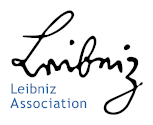- The Institute
- Research
- Dictatorships in the 20th Century
- Democracies and their Historical Self-Perceptions
- Transformations in Most Recent History
- International and Transnational Relations
- Edited Source Collections
- Dissertation Projects
- Completed Projects
- Dokumentation Obersalzberg
- Center for Holocaust Studies
- Berlin Center for Cold War Studies
- Publications
- Vierteljahrshefte
- The Archives
- Library
- Center for Holocaust Studies
- News
- Dates
- Press
- Recent Publications
- News from the Institute
- Topics
- Munich 1972
- Confronting Decline
- Feminist, Pacifist, Provocateur
- Der Mauerbau als Audiowalk
- Digital Contemporary History
- Transportation in Germany
- Envisaged Futures at the End of the Cold War
- From the Reichsbank to the Bundesbank
- German Federal Chancellery
- History of Sustainabilities: Discourses and Practices since the 1970s
- Changing Work
- Democratic Culture and the Nazi Past
- The History of the Treuhandanstalt
- Foreign Policy Documentation (AAPD)
- Dokumentation Obersalzberg
- Hitler, Mein Kampf. A Critical Edition
- "Man hört, man spricht"
- Dictatorships in the 20th Century
- Democracies and their Historical Self-Perceptions
- Transformations in Most Recent History
- International and Transnational Relations
- Edited Source Collections
- Dissertation Projects
- Completed Projects
- Dokumentation Obersalzberg
- Center for Holocaust Studies
- Berlin Center for Cold War Studies
A New World Order? Envisaged Futures of the US and West Germany at the End of the Cold War, 1988-1994
Projektinhalt:
The end of the Cold War opened up horizons for different possibilities in times of global seismic change. On the one hand, there was increased hope for a “new era of democracy, peace and unity” and of a definitive triumph for Western liberalism. On the other hand, threats of a “new world disorder” emerged, as the apparently stable epoch of the “long peace” gave way to an unstable globalized world, and new scenarios of conflict gained significance such as a potential “Clash of Civilizations”. It was within this context that United States President George H. W. Bush proclaimed his vision of a “New World Order” on September 11, 1990, in which democracy, human rights, and a free market economy represented the “global rules”. This was to be promoted by the United Nations as a means of bringing about a peaceful and secure future.
Focusing on the US, the only remaining global superpower, and the Federal Republic of Germany, the new regional superpower in Europe, this project analyses how the end of the bipolar system changed the envisaged futures of the international system. The study examines internal debates within and between US and West German governments as well as discussions among advisors on reshaping the international order. While the implementation of such a “New World Order” promised a better future, the US and Germany utilized this concept to consolidate and legitimize their new status as world powers.
The concept of a “New World Order” therefore provides a lens to bring to light the expectations, ideas, and practices of those. It uncovers normative dimensions, hopes, and fears, and offers new insights into the transformation of the international system at the end of the Cold War. This will be traced through the UN Agenda for Peace (1992), the Vienna World Conference on Human Rights (1993), and the UN Development Programme (1994).





